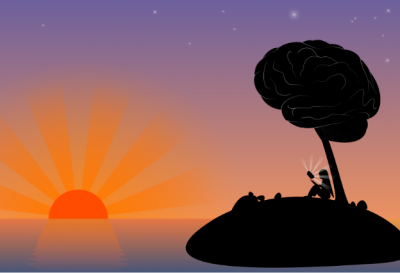
Hand turns dice and changes the expression “old habits” to “new habits”.
Instead of creating new year’s resolutions, I use many of the tools that I have written about to imagine the best possible outcome for the coming year and to examine my habits to see if I need to adjust them to live my imagined story.
The first step in creating a new story for myself is reflecting on the last year. I do this by journaling and allowing myself as much time as I need to process and record what I have learned over the previous year.
The second step is to write a Positive Intention where I describe in past tense the most positive and successful year I could imagine.
The final step is to identify any habit changes I want to make. For this year, I want to:
- Enhance is my ability to Focus and Finish. For me, this means being fully present and attentive to whatever task I am doing. As I imagined what this would look like if I was successful, it would mean that every person I interacted with would feel seen, I would limit my Work in Progress (WIP) to 1, and I would only do activities that couldn’t be effectively delegated to someone else. As I get better at Focusing and Finishing, both my professional and personal life will be transformed.
- Read something spiritual each night before I go to sleep. I will use a checklist that I leave on my nightstand to track my progress. My husband teases me that I get endorphins from checking things off a list, so this method of tracking should help me add this step to my nighttime routine.
- Re-establish my weekly blog. I stopped writing my blog when I took a medical leave last September and gave myself the time I needed to recover. Over the break, I thought long and hard about a process that would help me and my amazing communication team do this more effectively. I hope it works!
This process is based on what I have found to be effective and works for me.
How do you reset for a new year?







 This week I have been on vacation with my extended family in Breckenridge, Colorado. When we got to Colorado, we made an ambitious goal of hiking one of the mountains that is higher than 14,000 feet. Colorado natives refer to these peaks at 14ers. We chose Quandary Peak. At 14,265 feet, it is the tallest mountain in the 10 mile range that includes Breckenridge. It was categorized as “difficult” on the
This week I have been on vacation with my extended family in Breckenridge, Colorado. When we got to Colorado, we made an ambitious goal of hiking one of the mountains that is higher than 14,000 feet. Colorado natives refer to these peaks at 14ers. We chose Quandary Peak. At 14,265 feet, it is the tallest mountain in the 10 mile range that includes Breckenridge. It was categorized as “difficult” on the 
 As we started the long final ascent, it was necessary for me to change my focus and goal setting. Instead of focusing at the top of the peak, I started focusing on walking fifty steps before needing to stop and catch my breath. Hikers who were on their way down were encouraging and motivating by telling us we were close and that the view was well worth the climb.
As we started the long final ascent, it was necessary for me to change my focus and goal setting. Instead of focusing at the top of the peak, I started focusing on walking fifty steps before needing to stop and catch my breath. Hikers who were on their way down were encouraging and motivating by telling us we were close and that the view was well worth the climb.